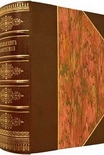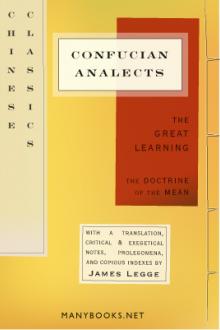Myths and Legends of China by E. Werner (free ebook reader for iphone TXT) 📗

- Author: E. Werner
Book online «Myths and Legends of China by E. Werner (free ebook reader for iphone TXT) 📗». Author E. Werner
Bodily Mutilations
Compared with the practices found to exist among most primitive races, the mutilations the Chinese were in the habit of inflicting were but few. They flattened the skulls of their babies by means of stones, so as to Page 39cause them to taper at the top, and we have already seen what they did to their spines; also the mutilations in warfare, and the punishments inflicted both within and without the law; and how filial children and loyal wives mutilated themselves for the sake of their parents and to prevent remarriage. Eunuchs, of course, existed in great numbers. People bit, cut, or marked their arms to pledge oaths. But the practices which are more peculiarly associated with the Chinese are the compressing of women’s feet and the wearing of the queue, misnamed ‘pigtail.’ The former is known to have been in force about A.D. 934, though it may have been introduced as early as 583. It did not, however, become firmly established for more than a century. This ‘extremely painful mutilation,’ begun in infancy, illustrates the tyranny of fashion, for it is supposed to have arisen in the imitation by the women generally of the small feet of an imperial concubine admired by one of the emperors from ten to fifteen centuries ago (the books differ as to his identity). The second was a badge of servitude inflicted by the Manchus on the Chinese when they conquered China at the beginning of the seventeenth century. Discountenanced by governmental edicts, both of these practices are now tending toward extinction, though, of course, compressed feet and ‘pigtails’ are still to be seen in every town and village. Legally, the queue was abolished when the Chinese rid themselves of the Manchu yoke in 1912.
Funeral Rites
Not understanding the real nature of death, the Chinese believed it was merely a state of suspended animation, in which the soul had failed to return to the body, though Page 40it might yet do so, even after long intervals. Consequently they delayed burial, and fed the corpse, and went on to the house-tops and called aloud to the spirit to return. When at length they were convinced that the absent spirit could not be induced to re-enter the body, they placed the latter in a coffin and buried it—providing it, however, with all that it had found necessary in this life (food, clothing, wives, servants, etc.), which it would require also in the next (in their view rather a continuation of the present existence than the beginning of another)—and, having inducted or persuaded the spirit to enter the ‘soul-tablet’ which accompanied the funeral procession (which took place the moment the tablet was ‘dotted,’ i.e. when the character wang, ‘prince,’ was changed into chu, ‘lord’), carried it back home again, set it up in a shrine in the main hall, and fell down and worshipped it. Thus was the spirit propitiated, and as long as occasional offerings were not overlooked the power for evil possessed by it would not be exerted against the surviving inmates of the house, whom it had so thoughtlessly deserted.
The latter mourned by screaming, wailing, stamping their feet, and beating their breasts, renouncing (in the earliest times) even their clothes, dwelling, and belongings to the dead, removing to mourning-sheds of clay, fasting, or eating only rice gruel, sleeping on straw with a clod for a pillow, and speaking only on subjects of death and burial. Office and public duties were resigned, and marriage, music, and separation from the clan prohibited.
During the lapse of the long ages of monarchical rule funeral rites became more elaborate and magnificent, but, though less rigid and ceremonious since the institution of Page 41the Republic, they have retained their essential character down to the present day.
Funeral ceremonial was more exacting than that connected with most other observances, including those of marriage. Invitations or notifications were sent to friends, and after receipt of these fu, on the various days appointed therein, the guest was obliged to send presents, such as money, paper horses, slaves, etc., and go and join in the lamentations of the hired mourners and attend at the prayers recited by the priests. Funeral etiquette could not be pu’d, i.e. made good, if overlooked or neglected at the right time, as it could in the case of the marriage ceremonial.
Instead of symmetrical public graveyards, as in the West, the Chinese cemeteries belong to the family or clan of the deceased, and are generally beautiful and peaceful places planted with trees and surrounded by artistic walls enclosing the grave-mounds and monumental tablets. The cemeteries themselves are the metonyms of the villages, and the graves of the houses. In the north especially the grave is very often surmounted by a huge marble tortoise bearing the inscribed tablet, or what we call the gravestone, on its back. The tombs of the last two lines of emperors, the Ming and the Manchu, are magnificent structures, spread over enormous areas, and always artistically situated on hillsides facing natural or artificial lakes or seas. Contrary to the practice in Egypt, with the two exceptions above mentioned the conquering dynasties have always destroyed the tombs of their predecessors. But for this savage vandalism, China would probably possess the most magnificent assembly of imperial tombs in the world’s records. Page 42
Laws of Intercourse
Throughout the whole course of their existence as a social aggregate the Chinese have pushed ceremonial observances to an extreme limit. “Ceremonies,” says the Li chi, the great classic of ceremonial usages, “are the greatest of all things by which men live.” Ranks were distinguished by different headdresses, garments, badges, weapons, writing-tablets, number of attendants, carriages, horses, height of walls, etc. Daily as well as official life was regulated by minute observances. There were written codes embracing almost every attitude and act of inferiors toward superiors, of superiors toward inferiors, and of equals toward equals. Visits, forms of address, and giving of presents had each their set





Comments (0)